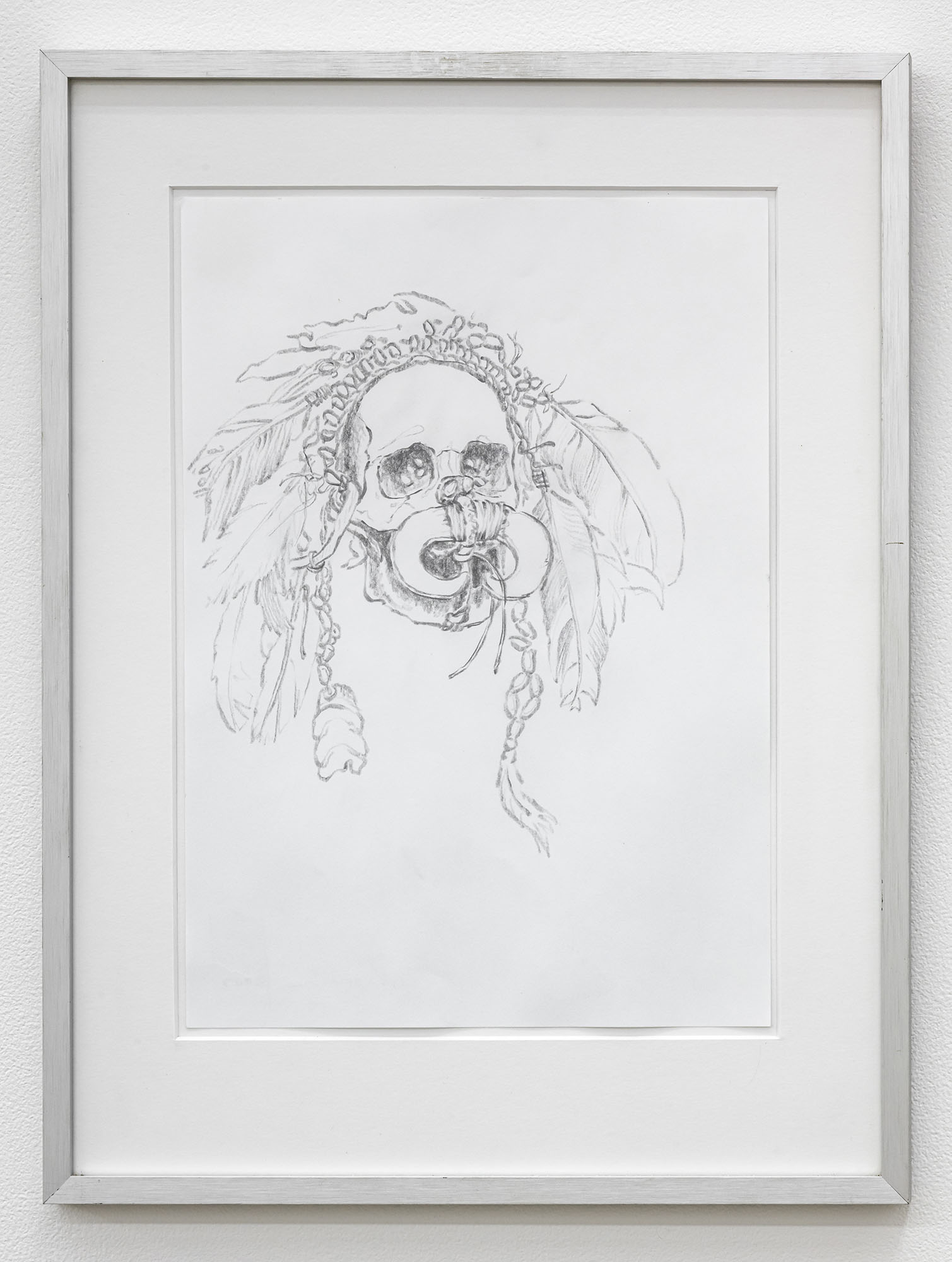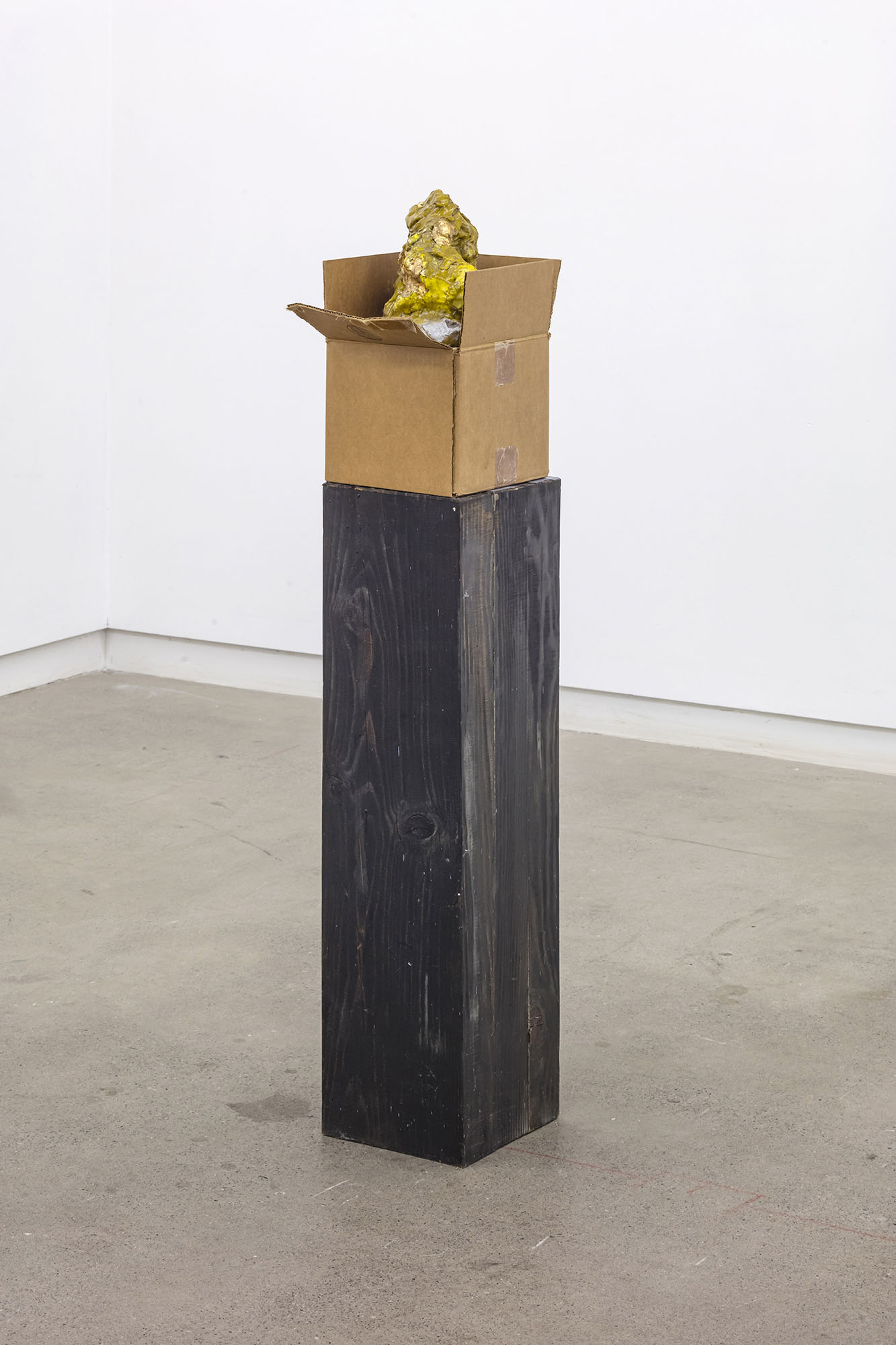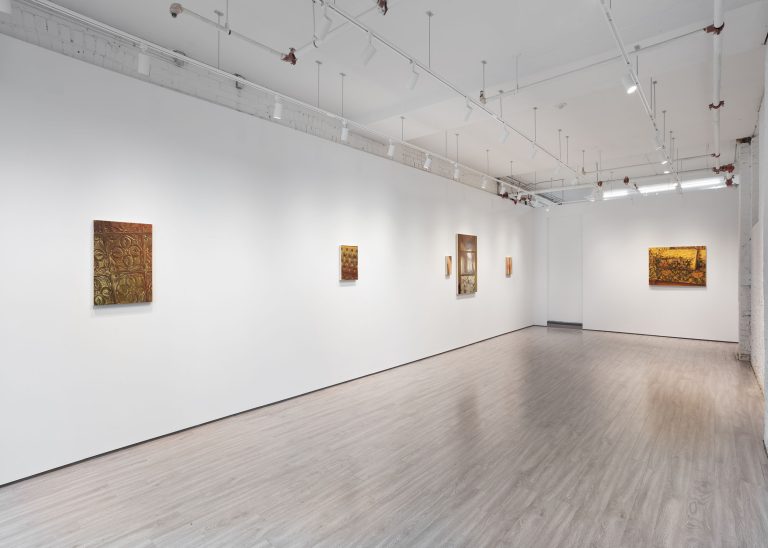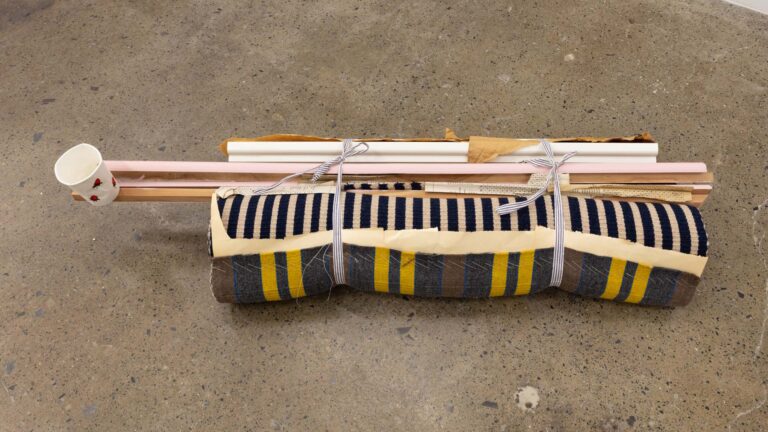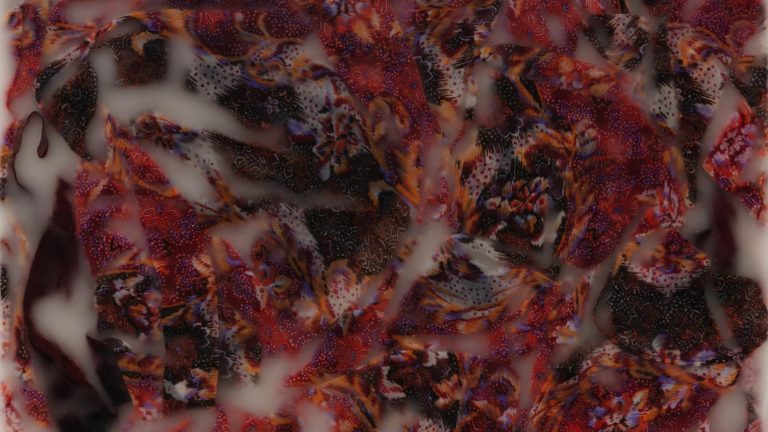Artists: Sarah Cale, Chris Cran, Jérôme Havre, Harold Klunder, Jennifer Murphy, ᐊᓂ ᓂᕕᐊᓯ (Annie Niviaxie), Hugh Scott-Douglas, Peter von Tiesenhausen, Gabriel Vormstein
Exhibition title: Many Sought The Aid Of The Gods, Still More Imagined There Were No Gods Left
Curated by: Clint Roenisch
Venue: Clint Roenisch, Toronto, Canada
Date: July 20 – August 24, 2019
Photography: all images copyright and courtesy of the artist and Clint Roenisch, Toronto
On August 24, 79 AD Mount Vesuvius exploded, spewing tons of molten ash, pumice and sulfuric gas miles into the atmosphere. A firestorm of poisonous vapors and molten debris engulfed the surrounding area, suffocating the inhabitants of the neighboring Roman resort cities of Pompeii, Herculaneum and Stabiae. Tons of falling debris filled the streets until nothing remained to be seen of the once thriving communities. The cities remained buried and undiscovered for almost 1700 years until excavation began in 1748. These excavations provided valuable insight into life during the Roman Empire, however in the 16th century the letters of Pliny the Younger were discovered, an eye witness to the cataclysmic event. In one he describes to his friend Cornelius Tacitus his experience during the eruption while he was staying in the home of his Uncle, Pliny the Elder. The elder Pliny was an official in the Roman Court, in charge of the fleet in the area of the Bay of Naples, stationed at Misenum.
“Ashes were already falling, not as yet very thickly. I looked round: a dense black cloud was coming up behind us, spreading over the earth like a flood. ‘Let us leave the road while we can still see,’ I said, ‘or we shall be knocked down and trampled underfoot in the dark by the crowd behind.’ We had scarcely sat down to rest when darkness fell, not the dark of a moonless or cloudy night, but as if the lamp had been put out in a closed room. You could hear the shrieks of women, the wailing of infants, and the shouting of men; some were calling their parents, others their children or their wives, trying to recognize them by their voices. People bewailed their own fate or that of their relatives, and there were some who prayed for death in their terror of dying. Many besought the aid of the gods, but still more imagined there were no gods left, and that the universe was plunged into eternal darkness for evermore.
There were people, too, who added to the real perils by inventing fictitious dangers: some reported that part of Misenum had collapsed or another part was on fire, and though their tales were false they found others to believe them. A gleam of light returned, but we took this to be a warning of the approaching flames rather than daylight. However, the flames remained some distance off; then darkness came on once more and ashes began to fall again, this time in heavy showers. We rose from time to time and shook them off, otherwise we should have been buried and crushed beneath their weight. I could boast that not a groan or cry of fear escaped me in these perils, but I admit that I derived some poor consolation in my mortal lot from the belief that the whole world was dying with me and I with it.”
Many Sought The Aid Of The Gods, Still More Imagined There Were No Gods Left, 2019, exhibition view, Clint Roenisch, Toronto
Many Sought The Aid Of The Gods, Still More Imagined There Were No Gods Left, 2019, exhibition view, Clint Roenisch, Toronto
Many Sought The Aid Of The Gods, Still More Imagined There Were No Gods Left, 2019, exhibition view, Clint Roenisch, Toronto
Many Sought The Aid Of The Gods, Still More Imagined There Were No Gods Left, 2019, exhibition view, Clint Roenisch, Toronto
Many Sought The Aid Of The Gods, Still More Imagined There Were No Gods Left, 2019, exhibition view, Clint Roenisch, Toronto
Peter von Tiesenhausen, Mecca, 2006, oil on canvas, 20 x 16 inches
Peter von Tiesenhausen, Mecca, 2006, oil on canvas, 20 x 16 inches
Peter von Tiesenhausen, Fire Wall (134), 2006, charred bee box lid, 20 x 16.5 inches; Peter von Tiesenhausen, Fire Wall (172), 2006, charred bee box lid, 20 x 16.5 inches
Peter von Tiesenhausen, Fire Wall (134), 2006, charred bee box lid, 20 x 16.5 inches; Peter von Tiesenhausen, Fire Wall (172), 2006, charred bee box lid, 20 x 16.5 inches
Jennifer Murphy, Gold Skull, 2010, paper, thread, pins, 42 x 30 inches
Jennifer Murphy, Gold Skull, 2010, paper, thread, pins, 42 x 30 inches
Gabriel Vormstein, (untitled), 2010, graphite on paper, 29.5 x 22 inches
Harold Klunder, Sun and Moon III, 2009, oil on burlap, 110 x 80 inches
Jèrôme Havre, Anthropologie de l’image, 2012, textiles, paddle, 81 x 10.5 x 14 inches
Jèrôme Havre, Anthropologie de l’image, 2012, textiles, paddle, 81 x 10.5 x 14 inches
ᐊᓂ ᓂᕕᐊᓯ Annie Niviaxie, Camp Scenes, c. 1980s, felt, sealskin, cotton, embroidery floss tapestry, 79 x 110 inches
ᐊᓂ ᓂᕕᐊᓯ Annie Niviaxie, Camp Scenes, c. 1980s, felt, sealskin, cotton, embroidery floss tapestry, 79 x 110 inches
Chris Cran, The Artist In His Studio, 2015, acrylic on panel, 46.26 inch diameter
Hugh Scott-Douglas, (untitled), 2010, cardboard, plaster, glazes, 16 x 9 x 9 inches
Hugh Scott-Douglas, (untitled), 2010, cardboard, plaster, glazes, 16 x 9 x 9 inches
Sarah Cale, Oracle, 2012-2015, oil and unraveled linen on linen, 77 x 28 inches













